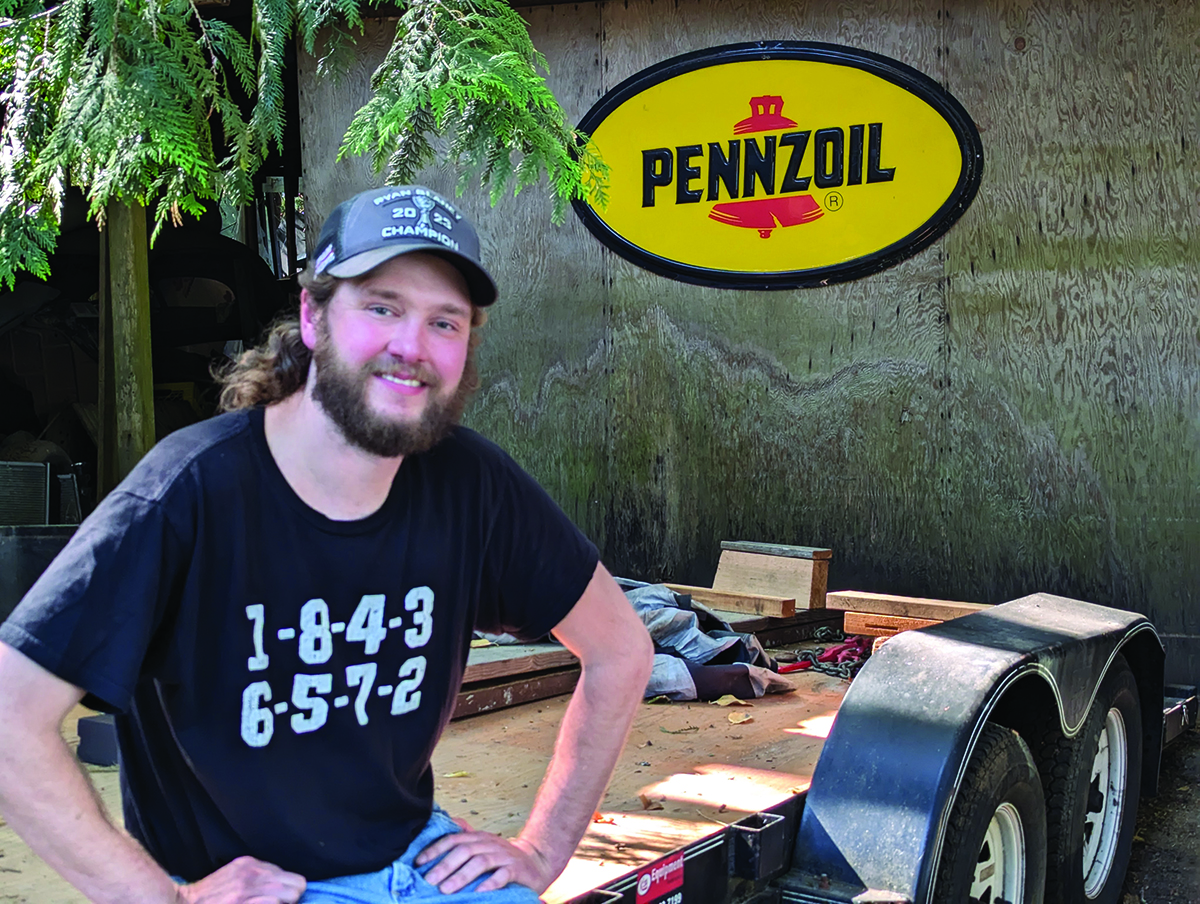
5 minute read
Racing's a Real Drag
BY KERITH WADDINGTON
A Chemainus drag racer who won a competition at the Port McNeill airport on June 22 can relate to Sir Stirling Moss, widely considered to be the best Formula One driver of all time. Moss is known for saying, “The ideal race car will expire 100 yards past the finish line”.
And that, in essence, is what happened to Nick Marks when the starter on his beloved 1981 orange Camaro broke shortly after the race. “It was the oddest feeling I’ve ever had,” laughs the local racer. “I went from hero to zero in 30 minutes”.
But that’s part of the sport, Marks acknowledges. “You put it all out there every time. You want nothing left at the finish, and that goes for the car and yourself.”
Cars and drag racing are in Marks’ blood. While growing up, his father owned several car-related businesses and used to participate in local drag racing. “Cars are what I grew up with and always knew,” laughs Marks. “I didn’t have much of a choice!” Marks has been driving since he was 13 years of age and put the number of races he has been in in the “hundreds.”
An interesting bit of local history: Marks belonged to the Saltair Pistons, a local drag-racing team that started as an informal club that helped youngsters learn mechanics, welding and more. “My dad donated a car to the Pistons, and I used to race it at Western Speedway in Victoria,” says Marks. “That’s when I was bit by the bug”.
For those not in the know, drag racing is a motorsport that involves two or four cars racing against each other over a straight track for a fixed distance, usually a quarter of a mile.
The history behind drag racing is fascinating. The term ‘drag’ refers to a horse-drawn sled used to flatten roads. It later expanded to include any vehicle dragged behind horses or men. Then the term jumped to the road itself, and the principal road in town became ‘the main drag’. So drag racing meant street racing!
A further evolution in the sport came along with what is now known as ‘bracket racing”. Bracket racing is when the slower car gets a head start when racing a faster car. This allows vehicles not matched in weight or horsepower to compete. “So if everything is perfect, which is extremely rare, both cars will get to the finish line at the same time”, says Marks. “That way it isn’t the car itself that determines the winner, but the driver's skill. It evens the playing field”.
Marks races in the slower class known as ‘Sportsman,’ mostly with cars people could drive on the road. The faster class is called ‘Pro,' and those are mostly race cars with a hot rod motor, big tires, and lots of weight removed.
Good reaction time, like .07 of a second or better, will help drivers win races, says Marks. In the Port McNeill race, his Camaro went from a dead stop to 80 mph in 8.41 seconds and travelled 660 feet. “A good drag race in my mind is when both cars are very close crossing the finish line, almost to the point that neither driver knows who won”, says Marks.
The Chemainus man with a need for speed says that when the “tree” is coming down (the electronic timing device is known as the Christmas tree), “the adrenaline rush is phenomenal, and I just think ‘gotta win’.” He affectionately calls his father, who accompanies him to races, the “lead crew chief.”

The glory days of drag racing have passed, acknowledges Marks, and as such, he is not surprised that venues for motorsports on Vancouver Island have dwindled in recent years. The Cassidy raceway closed in 1999, the historic Western Speedway in Victoria shuttered in 2022, and Port Alberni’s “Thunder in the Valley” was cancelled in 2020. That leaves Saratoga Speedway in Black Creek and three “Rumble on the Runway” events – hosted by the North Island Timing Association each summer - at the airport in Port McNeill.
Marks was sad to see Canada’s oldest speedway shut down, but is proud to say he was the last winner in street class drag racing at Western.
He feels the loss of racing venues is a loss for everyone. “Participating in or watching car racing is such a great family activity”, he says. “And the excitement of the kids when engines start to rev, and drivers do burnouts to warm up their tires is the best thing to see.”
And what does the rest of the season hold for Marks?
“I’m back to Port McNeill at the end of July and end of August” he says. “And when I’m not racing, I’m either in my shop working on my car or with buddies working on a car, or I’m watching racing like NASCAR, NHRA or Sports car racing.”




